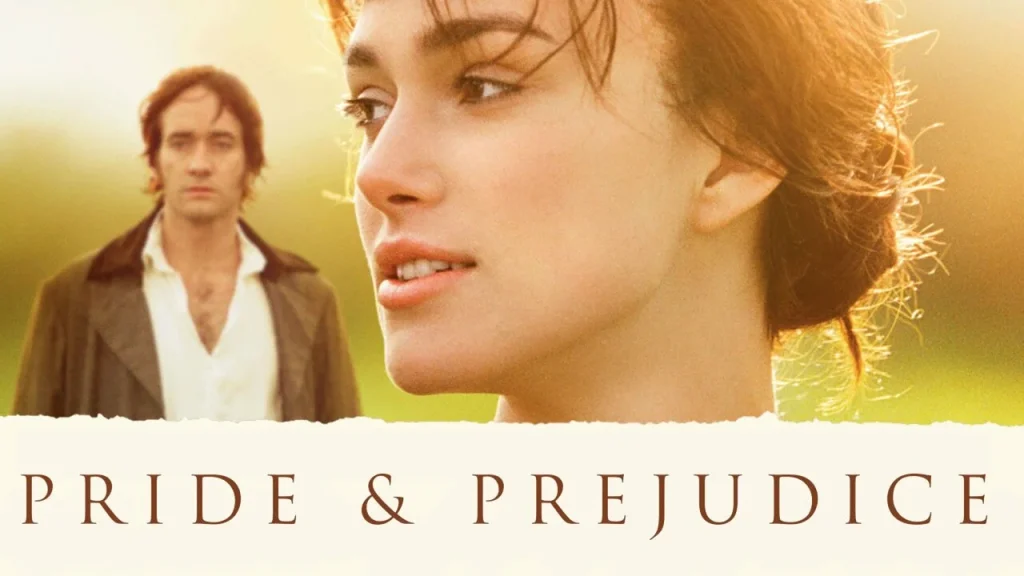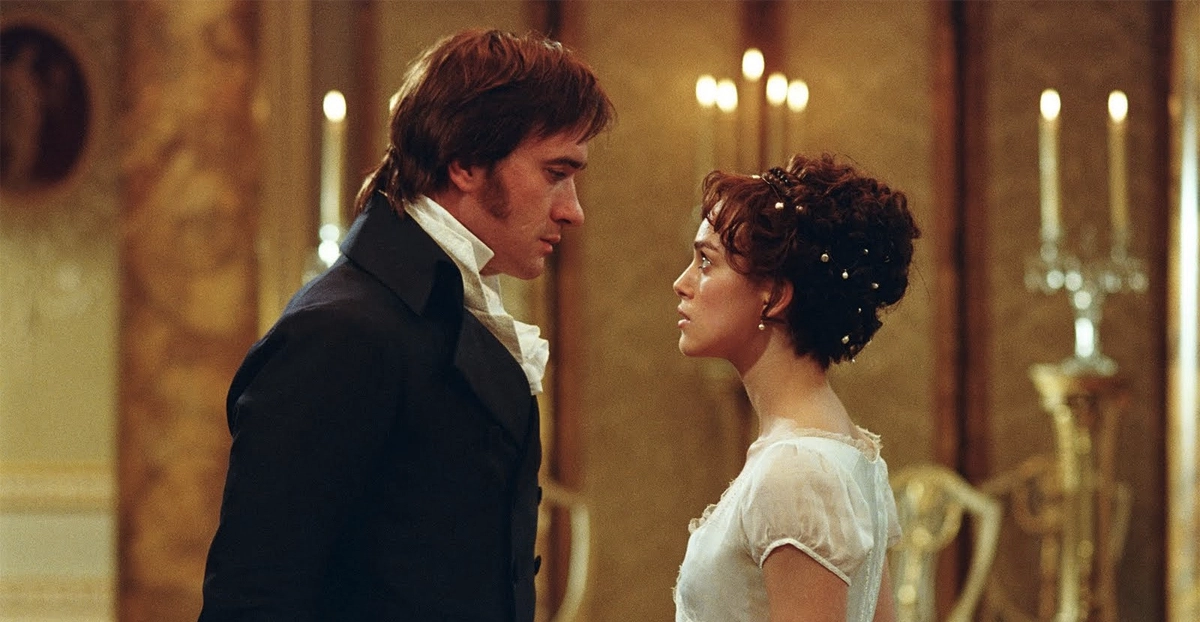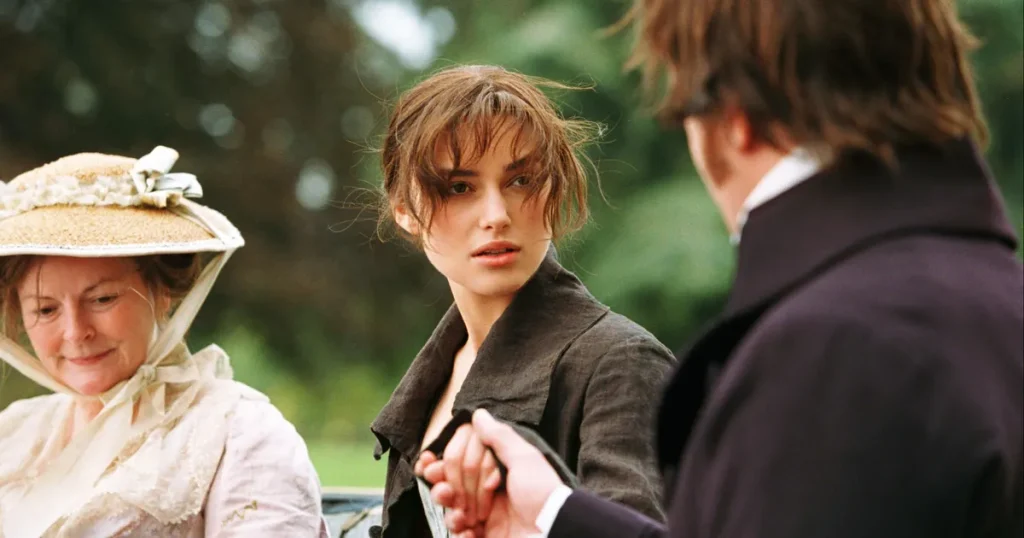Love and society, morality in Jane Austen’s all-time classic “Pride & Prejudice” weave together to form a captivating picture of class consciousness among 19th-century England. The book, set in the Georgian era of love and romance features an original take on a timeless story with all for fun — class congestion, social pedigree intrigue that only good parody can provide.
The central characters are Elizabeth Bennet and Mr. Darcy, who meet each other over pride prejudice initially which leads to greater problems. It is assumed that such a life changes for Simarika and they finally get together as the story unfolds through many societal norms, love complications and human hearts complexities.
Austen’s writing is famous for its beauty and precision — it perfectly reflects the time period with all of its idiosyncrasies as well as her characters’ battles, victories and shortcomings. She makes astute observations and satirical comments, all the while reflecting on society’s moral bedrock encouraging us to go beyond racial prejudice.
The Themes of Love and Romance in “Pride and Prejudice”
Contents
- 1 The Themes of Love and Romance in “Pride and Prejudice”
- 2 Exploring the Societal Norms and Expectations in the Novel
- 3 The Portrayal of Marriage and its Significance in the Story
- 4 The Characters and Their Role in Examining Morality in the Novel
- 5 The Influence of Social Class on Relationships and Decisions
- 6
- 7 The Feminist Undertones in “Pride and Prejudice”
- 8 The Relevance of the Novel in Today’s Society
- 9 The Impact and Legacy of “Pride and Prejudice”
- 10 Appreciating the Timeless Brilliance of Jane Austen’s Work
- 11 Author
Love and romance are at the heart of “Pride and Prejudice.” Austen seamlessly navigates the literary landscape, exploring in her narrative this ever so deep tango of desire- societal enforcement-the ideal version for love.scripted by Austenisen written. At its heart, ‘Pride and Prejudice’ is a romantically driven novel: “The central plot of the story revolves around Elizabeth Bennet (one of five girls), whose family faces financial ruin after her father dies. -She is forced to marry.”
The author has done an epitome characterization of making readers see Elizabeth and Darcy go from judging preconceptions until Callitamantia know mutual respect. This analysis is made all the more interesting by Austen’s edge as a writer observational to societal norms, and so excellently revealing of her characters biasing opinions against one another.
Austen uses the love of Elizabeth and Darcy to examine courtship, as well as marriage in 19th century England. The author used the marriage to become a refuge from Love and put more thought-provoking analysis on what status of social level is, as well as financial generated with this unique institution leads you have been thinking Marriage does not necessarily make individuals happy or connect them externally.

Exploring the Societal Norms and Expectations in the Novel
Pride and Prejudice offers a commentary on the ways that social norms impacted people’s lives in 19th century England. Austen’s razor sharp insight and awareness of the nuances of Victorian class structures enable her to paint an incredibly detailed picture of life in society which informs/limits each character.
Longbourn, the Bennet family estate where much of Austen’s novel is set, operates as a microcosm for society writ large: a vast nexus of social statuses and class relations that would make or break its various inhabitants. Austen addresses the limitations that a structured society imposes on personal hopes and desires through well written conversations, as characters obey or reject bounds designed to maintain respectability.
The trials of the Bennet sisters, especially Elizabeth and Jane, show us what married life was like for women at this time. Through the author’s observations on women who have few options other than to find a man they can marry in order that as wives, they will be relieved offinancial responsibility and become respectable members of society; her expectations also directly reflect some distinctly conservative attitudes toward gender dynamics/power structures within Georgian culture.
The Portrayal of Marriage and its Significance in the Story
Marriage is a central theme in “Pride and Prejudice,” and Austen’s portrayal of this institution is both insightful and multifaceted. The author explores the various motivations and perspectives that drive the characters’ decisions regarding marriage, from the pragmatic considerations of financial security and social status to the more romantic and emotional aspects of love and companionship.
The novel presents a range of marriage models, from the loveless union of Charlotte Lucas and Mr. Collins, to the passionate and transformative relationship between Elizabeth and Darcy. Through these contrasting depictions, Austen invites the reader to consider the complexities and nuances of marriage, challenging the notion of a single, idealized form of marital bliss.
Austen’s treatment of marriage also serves as a lens through which she examines the broader societal structures and values of the era. The author’s commentary on the limited choices available to women, the importance of financial stability, and the social stigma attached to remaining unmarried, all contribute to a deeper understanding of the role of marriage in the lives of the characters and the society they inhabit.
The Characters and Their Role in Examining Morality in the Novel
The characters of “Pride and Prejudice” are moral vehicles; it is through them that Austen tells her story about values, or the tension between personal dispositions to act morally and social pressures. Taking advantage of the varied and decidedly messed-up psychographics of his entourage, the author explores what makes people tick: finding these subtle lines that divide integrity from conformism.
The moral topography of the novel hinges on its two main characters Elizabeth Bennet and Mr. Darcy. These first impressions and prejudices, born from vanity and societal prejudice provide the framework through which Austen explores self-assessment, modesty — built on an open minded evaluation of oneself—and how we must reconsider preconceived notions.
These characters, along with the obsequious Mr. Collins and manipulative Mrs. Bennet (est), or the sweet yet morally superior Mr Bingley, further contribute to moral exploration native throughout Pride & Prejudice. By presenting these figures in a vaguely favorable light, or at least as generally well-meaning but still fundamentally flawed individuals by nature (as they all are), Austen calls our moral judgments into question and leads us to ponder darker areas of judgement than the black-and-white right/wrong paradigm.
The rigid social hierarchy of 19th-century England plays a significant role in shaping the relationships and decisions of the characters in “Pride and Prejudice.” Austen’s keen observation of the class system and its impact on the lives of her protagonists offers a profound commentary on the ways in which social status can influence the pursuit of love, the formation of alliances, and the overall trajectory of an individual’s life.
The contrast between the Bennet family, with their modest means and lower social standing, and the wealthy Darcy and Bingley clans, highlights the class divisions that permeate the novel’s landscape. Austen’s exploration of the tensions and prejudices that arise from these class distinctions provides a nuanced understanding of the social obstacles faced by the characters, particularly Elizabeth and Darcy, in their quest for mutual understanding and love.
The author’s examination of the role of wealth and social status in marriage further underscores the influence of class on the characters’ decisions and relationships. The pressure to marry well, both for financial security and social advancement, is a constant undercurrent in the novel, shaping the motivations and actions of the characters in complex and often conflicting ways.
The Feminist Undertones in “Pride and Prejudice”
While “Pride and Prejudice” is often celebrated for its timeless love story, the novel also possesses a strong feminist undercurrent that reflects Austen’s progressive views on gender and the role of women in society. Through the character of Elizabeth Bennet, the author presents a compelling portrait of a woman who defies the societal expectations of her time, asserting her independence, intelligence, and unwavering sense of self.
Elizabeth’s refusal to conform to the traditional mold of the 19th-century woman, her willingness to challenge societal norms, and her insistence on marrying for love rather than financial security, all serve as a testament to Austen’s feminist leanings. The author’s nuanced exploration of the limited options available to women, their dependence on marriage for social and economic stability, and the societal pressures they face, offers a thought-provoking commentary on the gender dynamics of the era.
Moreover, the inclusion of other strong-willed female characters, such as Elizabeth’s sister, Jane, and the independent-minded Charlotte Lucas, further reinforces Austen’s commitment to presenting a diverse range of female experiences and perspectives. By doing so, the author challenges the patriarchal structures that dominated the social landscape of 19th-century England, paving the way for a more empowered and multifaceted portrayal of women in literature.
The Relevance of the Novel in Today’s Society
Despite its historical setting, “Pride and Prejudice” continues to captivate and resonate with readers in the modern era. Austen’s timeless exploration of themes such as love, societal norms, morality, and gender dynamics, continues to hold relevance in the 21st century, offering insights that transcend the boundaries of time and place.
The novel’s examination of the complex interplay between personal desires and societal expectations, and its nuanced portrayal of the challenges faced by individuals in navigating these tensions, speaks to the universal human experience. Austen’s ability to craft characters that are both products of their time and timeless in their emotional depth and psychological complexity allows modern readers to empathize and identify with the struggles and triumphs of the protagonists.
Moreover, the novel’s continued relevance can be seen in the way it continues to inspire and influence contemporary media, from film and television adaptations to literary retellings and fan fiction. The goltogel login enduring popularity and adaptability testify to the profound and lasting impact of Austen’s work, as it continues to captivate and engage audiences across generations.
The Impact and Legacy of “Pride and Prejudice”
Jane Austen’s “Pride and Prejudice” has undoubtedly left an indelible mark on the literary landscape, cementing the author’s status as one of the most celebrated and influential writers in the English language. The novel’s enduring popularity and critical acclaim are a testament to Austen’s masterful storytelling, her keen social observations, and her ability to craft characters and narratives that resonate with readers across time and place.
The impact of “Pride and Prejudice” can be seen in the way it has influenced and inspired countless authors, filmmakers, and artists over the decades. From the numerous film and television adaptations that have brought the novel to life on the screen, to the countless literary retellings and reimaginings that have built upon Austen’s legacy, the novel’s cultural footprint is undeniable.
Beyond its artistic and creative influence, “Pride and Prejudice” has also left a lasting impact on the way we perceive and engage with themes of love, society, and morality in literature and beyond. Austen’s insightful commentary on the complexities of human relationships, the impact of social structures on individual lives, and the importance of overcoming prejudice, continue to resonate with readers and scholars alike, inspiring deeper reflections on the human condition and the enduring relevance of classic literature.
Appreciating the Timeless Brilliance of Jane Austen’s Work
In the enduring legacy of “Pride and Prejudice,” we find a testament to the timeless brilliance of Jane Austen’s literary genius. Through her masterful storytelling, keen social observations, and profound insights into the human experience, the author has crafted a work that continues to captivate and inspire readers across generations.
Austen’s ability to weave a compelling narrative that seamlessly blends the themes of love, society, and morality, while offering a nuanced and thought-provoking commentary on the complexities of the human condition, is a testament to her literary prowess. The enduring popularity and critical acclaim of “Pride and Prejudice” are a testament to the author’s enduring impact on the literary landscape and her ability to create works that transcend the boundaries of time and place.
As we delve into the captivating world of “Pride and Prejudice,” we are not only entertained by the timeless love story of Elizabeth and Darcy, but we are also challenged to reflect on the enduring relevance of Austen’s themes and the profound insights they offer into the human experience. It is this timeless brilliance that has secured “Pride and Prejudice” a place among the most beloved and influential works of literature, cementing Jane Austen’s legacy as a true master of the written word.
Also read: Marrakech: Discovering the Rich Culture and Traditions of Morocco’s Desert Jewel






